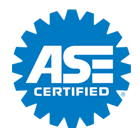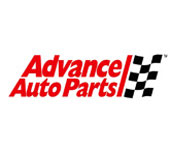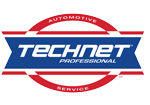
How Much is Enough for Venice Auto Owners? Tire Tread DepthPosted September 23, 2018 7:52 AMMost Venice drivers know that tires wear out and that the wear has to do with tread depth. Most of us have heard that “bald” tires are dangerous, but most of us picture a tire with no tread at all when we think of a bald tire. And when we take our vehicles in for preventive maintenance, the technician tells us they're need to be replaced long before all the tread is worn off. Just how much tire tread wear is too much? And how can you tell? Tires are and their condition is important to the safe handling of a vehicle, so it's for Venice vehicle owners to know the answers to these questions. Car Doc On The Island | ||
SearchArchiveApril 2016 (16)May 2016 (5) June 2016 (4) July 2016 (4) August 2016 (5) September 2016 (4) October 2016 (5) November 2016 (4) December 2016 (4) January 2017 (5) February 2017 (4) March 2017 (4) April 2017 (5) May 2017 (4) June 2017 (4) July 2017 (5) August 2017 (4) September 2017 (3) October 2017 (5) November 2017 (4) December 2017 (3) January 2018 (5) February 2018 (4) March 2018 (4) April 2018 (5) May 2018 (4) June 2018 (4) July 2018 (5) August 2018 (4) September 2018 (5) October 2018 (4) November 2018 (4) December 2018 (5) January 2019 (5) February 2019 (4) March 2019 (5) April 2019 (4) May 2019 (4) June 2019 (5) July 2019 (4) August 2019 (4) September 2019 (5) October 2019 (4) November 2019 (4) December 2019 (5) January 2020 (5) February 2020 (4) March 2020 (5) April 2020 (4) May 2020 (5) June 2020 (4) July 2020 (4) August 2020 (5) September 2020 (4) October 2020 (4) November 2020 (5) December 2020 (4) January 2021 (6) February 2021 (4) March 2021 (4) April 2021 (4) May 2021 (5) June 2021 (4) July 2021 (4) August 2021 (5) September 2021 (4) October 2021 (5) November 2021 (4) December 2021 (4) January 2022 (6) February 2022 (4) March 2022 (4) April 2022 (4) May 2022 (5) June 2022 (4) July 2022 (5) August 2022 (4) September 2022 (4) October 2022 (5) November 2022 (4) December 2022 (4) January 2023 (5) February 2023 (4) March 2023 (4) April 2023 (5) May 2023 (4) June 2023 (4) July 2023 (5) August 2023 (4) September 2023 (4) October 2023 (5) November 2023 (4) December 2023 (5) January 2024 (5) February 2024 (4) March 2024 (5) April 2024 (2) | CategoriesAir Conditioning (12)Alignment (11)Alternator (4)Auto Safety (6)Automotive News (7)Battery (14)Brake Service (1)Brakes (14)Cabin Air Filter (5)Check Engine Light (3)Cooling System (14)Customer Detective Work (1)Dashboard (3)Diagnostics (4)Diesel Maintenance (1)Differential Service (3)Drive Train (7)Emergency Items (1)Engine Air Filter (2)Exhaust (7)Fluids (16)Fuel Economy (9)Fuel Saving Tip: Slow Down (1)Fuel System (37)Headlamps (2)Inspection (6)Keys to a long lasting vehicle (4)Maintenance (43)Monitoring System (3)Oil Change (4)Older Vehicles (4)Parts (5)Safe Driving (1)Safety (5)Serpentine Belt (6)Service Intervals (9)Service Standards (10)Shocks & Struts (8)Spark Plugs (1)Steering (9)Suspension (3)Timing Belt (6)Tire Rotation and Balancing (3)Tires (6)Tires and Wheels (36)TPMS (2)Transmission (5)Trip Inspection (2)Warranty (1)What Customers Should Know (54)Wheel Bearings (1)Windshield Wipers (8)Winter Prep (4)Winter Tires (1) | |
What our clients are saying about us
We have established longterm and stable partnerships with various clients thanks to our excellence in solving their automotive needs!
Great people and great service. I wouldn’t bring my car elsewhere! If you’re looking for honest, by the book, work then give them a chance. Thank you all again!

Car doc is my new service provider! Stacy was wonderful keeping me posted on each procedure that needed to be completed on my car. She explained in layman’s terms that I could understand easily. I also thought that I received excellent service at a fair and honest price. I would highly recommend car doc! Marlene koumbis










